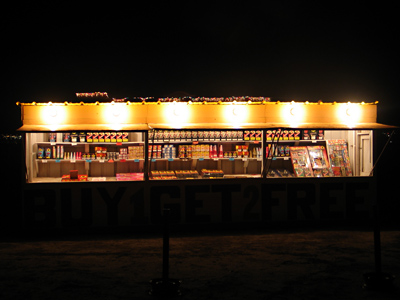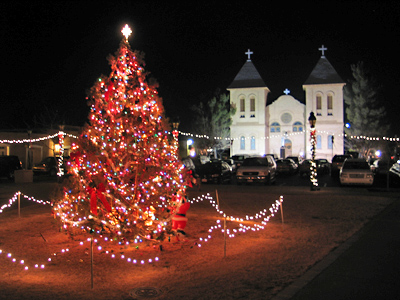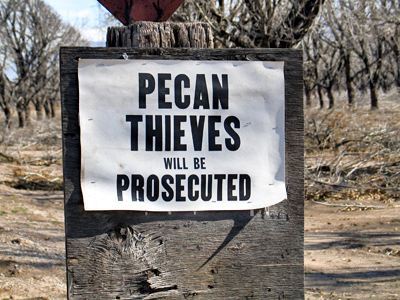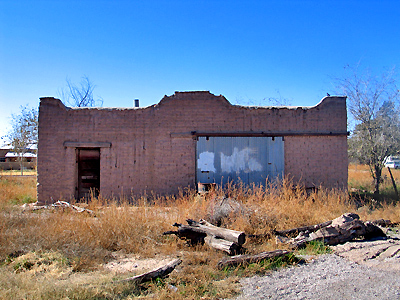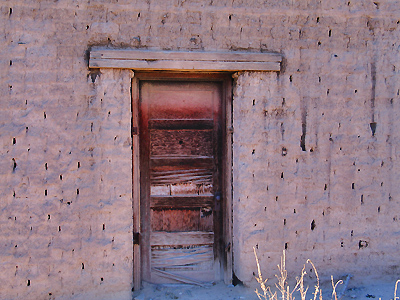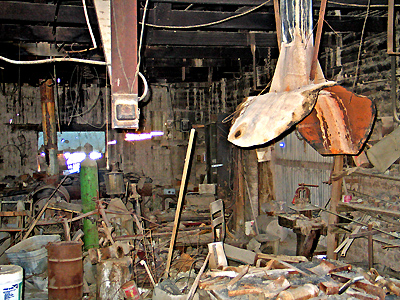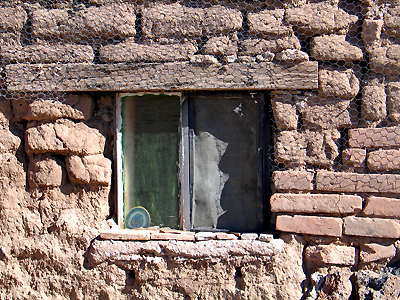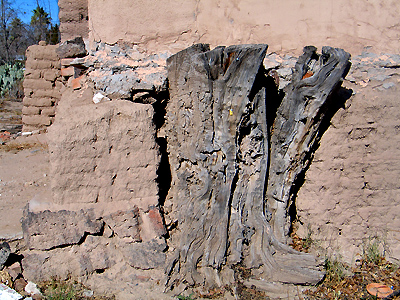The 2006 pecan harvest is almost finished.
The trees are ready for harvest when most of the protective shucks have split. You can see the open shucks and pecans here:
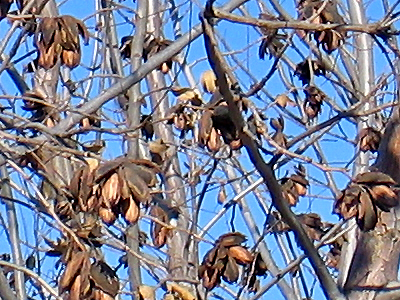
Pecan trees alternate between high yield and low yield years. This year is a low year for this area. Production in a low year can be as little as 1/3 of a high year.
Here is a tree from an orchard with an excellent yield this year, perhaps because the trees are younger and were recently transplanted.
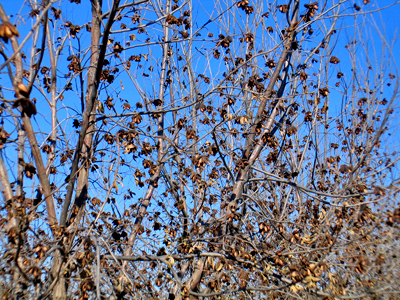
The first step in harvesting is getting the nuts out of the tree. This is done with a shaker:
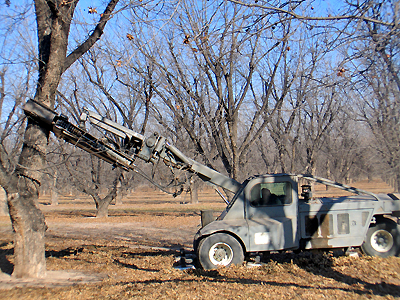
The trees are shook for about 2 or 3 seconds and you can feel the shaking in the ground 20 or 30 feet away. The going rate to get your trees shook if you don't own a shaker is $5 a tree.
Sometimes it is necessary to shake several branches of a large tree.
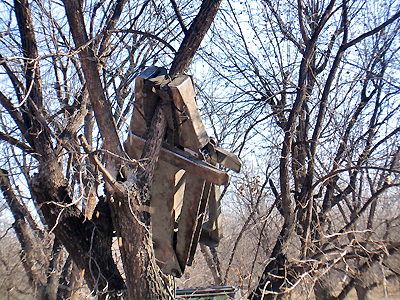
Here you can see pecans falling as the tree shakes.
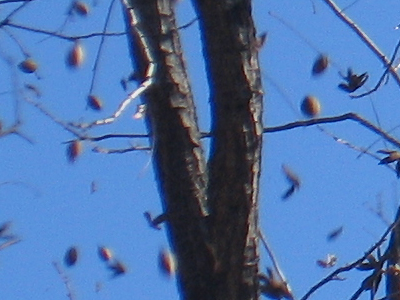
The shaker shakes out anything that will fall, including shucks, leaves, and twigs. All of this joins the leaves which have already fallen from the tree, so the second step is to use a windrow machine to rake this material into rows.
The last step in harvesting is to use a sweeper to pick up the leaves and debris and pecans and separate the pecans. Here's a sweeper in action.

The sweeper stores the nuts in a bin and grinds the leaves and debris and returns it to the soil.

Here are what trees look like after harvest.

Doña Ana county produces more pecans than any similarly-sized area in the world.
Tags:
Pecan Harvest,
Pecan Shaker,
Pecan SweeperLabels: Agriculture, Pecans
